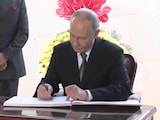Breathing exercises are very accessible, effective, and easy to do. Almost anyone from young children to seniors can learn to do them and enjoy their vast benefits. Another good thing is that there are a variety of breathing exercises that can be practised to address different needs. While not all of them have been researched, there's one that was made famous by an American doctor, called the 4-7-8 breathing technique. Inspired by the yogic practice of Pranayama, this technique is relaxing and helps people develop greater control over their breath.
It is straightforward to do and can be done anywhere. Here's how to get started:
1. Take a comfortable sitting position with your back upright.
2. Place the tip of your tongue in the area behind your upper teeth. Let it rest there throughout the practice. This helps you breathe easily through the nose.
3. Before you begin, exhale first. While exhaling, make an audible whooshing sound and empty out the breath. Now we start the practice.
4. Close your mouth and inhale softly through the nostrils for a count of 4.
5. Now hold the breath inside for a count of 7
6. Exhale through the mouth, making than whooshing sound for a count of 8
7. This completes one round. Continue practising by inhaling silently through the nose, holding the breath, and exhaling audibly through the mouth.
You can do 4 to 5 rounds of this breathing and eventually increase it to 10. If holding your breath for a count of 7 is too much, you can simply count faster and speed up the practice. Alternatively, you can work on equal breathing first, a 4:4:4 ratio of inhaling, holding, and exhaling. Gradually you can start increasing the count by one after every one or two weeks depending on your capacity. It can be practised twice a day, 5-10 breaths or as and when you need it.
Within a few rounds of this breathing, you may feel naturally relaxed and calm. This is because this technique helps relax the tense respiratory muscles, thereby reducing the work of breathing. This means you'll find it easier to take each breath, unlike when someone has an anxiety or panic attack where each breath becomes laboured and difficult. That's why this technique is helpful in anxiety and depression, as it counters the typical pattern of shallow breathing seen in these conditions.
Most deep breathing practices, including 4 7 8 breathing, release chemicals that reduce excessive brain activity, which helps us attain a calm state of mind. In addition, it helps regulate stress hormones like cortisol, positively impacts our heart rate, and improves our breathing patterns. This makes it an excellent activity to include in your Anxiety management toolkit.
Ms. Namita Piparaiya, Yoga and Ayurveda Lifestyle Specialist, Founder - Yoganama
Disclaimer: The opinions expressed within this article are the personal opinions of the author. NDTV is not responsible for the accuracy, completeness, suitability, or validity of any information in this article. All information is provided on an as-is basis. The information, facts, or opinions appearing in the article do not reflect the views of NDTV and NDTV does not assume any responsibility or liability for the same.















